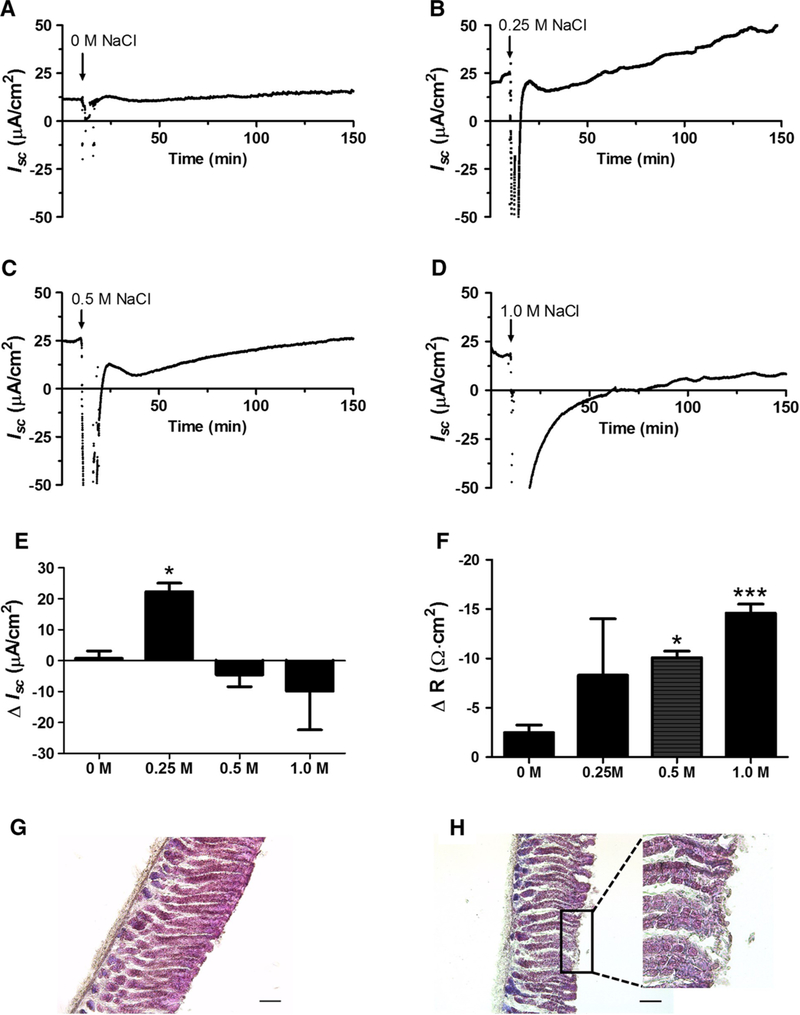Fig. 1.
Hypertonic NaCl effects on transepithelial parameters. Wild-type mouse muscle-stripped gastric corpus was mounted into an Ussing chamber (area = 0.1 cm2). Short-circuit current (Isc) and resistance (R) were measured as described in Methods. a–d Time course of Isc before and after addition of 0 M, 0.25 M, 0.5 M, or 1.0 M NaCl to luminal nutrient solution. Time zero starts 10 min baseline measurement prior to 5 min (arrow) exposure to NaCl challenge (n = 4–5). e Change in (Δ) Isc from baseline, measured 2 h after NaCl challenge (t = 135 min) (n = 4–5). *P < 0.05 versus zero, mean ± SEM. f Change in (Δ) R between baseline and 15 min after NaCl chalenge (t = 30 min), *P < 0.05, ***P < 0.001 mean ± SEM (One-way ANOVA P = 0.0023; Dunnett’s Multiple Comparison Test to 0 M NaCl). H&E of tissue challenged 5 min with 0 M (g) or 0.5 M NaCl (h) while mounted in the Ussing chamber, then tissue removed and fixed immediately. Scale bar = 100 μm. Inset in h shows magnified representative region of mild epithelial damage

